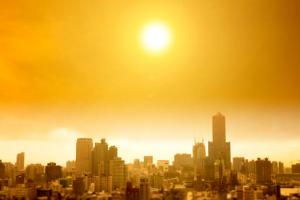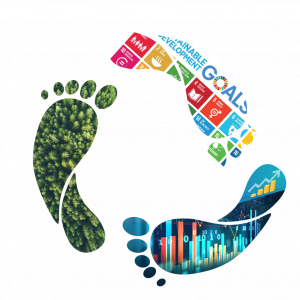New heatwave on the way: These measures are helping cities and municipalities right now
According to current forecasts, there is more hot, humid weather expected across APAC and the Middle East this summer with new heat records being broken.
SINGAPORE, ASIA PACIFIC, SINGAPORE, August 4, 2025 /EINPresswire.com/ -- May 2025 was also the second warmest May worldwide, accompanied by a severe spring drought across northwest Europe. The effects are felt particularly strongly by densely built-up inner cities - with their sealed surfaces and lack of shade provision, they heat up quickly. The minimal provision of urban greenery is often not sufficient to regulate this heat, which means it continues to build up in these areas. “On so-called tropical nights, when temperatures no longer fall below 20 degrees and heat islands form, even night-time ventilation hardly provides any cooling. Passive cooling strategies, therefore, such as external shading, green facades and roofs, and use of energy-storing building materials, are all crucial in maintaining living areas at a pleasant temperature," explains Gregor Grassl, Associate Partner and Head of Green Urban Development at the consulting firm Drees & Sommer.
Targeted measures are not only able to reduce heat stress in cities, but can also improve air quality, increase energy efficiency and promote biodiversity. According to Gregor Grassl, there are already practical solutions available to reduce extreme temperatures in cities. These measures can significantly improve people's quality of life and at the same time make cities more resilient to the consequences of the climate crisis.
The Drees & Sommer team has worked with municipalities, developers, and investors in cities like Riyadh, Singapore, Abu Dhabi, and Ho Chi Minh City, helping them adopt climate adaptation strategies that not only lower urban heat but also boost liveability, biodiversity, and energy efficiency. Based on experience from these and other climate adaptation projects, the urban development experts at Drees & Sommer have derived the following recommendations as important tools to combat urban heat islands:
1. Provision of Shade
Shaded streets, walkways, and public spaces are among the most cost-effective strategies to reduce urban heat. From solar-shaded bus stops in Abu Dhabi to tree-lined corridors in Singapore, cities are investing in microclimate improvements. Trees not only offer shade but also cool the surrounding air through evaporation and improve air quality by absorbing CO₂. In Rastatt, Germany, for example, 1,000 new trees were planted to help mitigate summer temperatures - a model that could be replicated across the Middle East’s planned urban expansion zones.
2. Cooling with Plants: Greener Facades & Unsealed Surfaces
The unsealing of asphalted areas, such as car parks, alleys, and public squares can have a major impact on urban microclimates. Alternative surfaces such as gravel, grass pavers, or porous paving enable natural water absorption and cooling. In high-density cities such as Bangkok or Ho Chi Minh City, vertical greenery and roof gardens are increasingly being explored as compact greening options. Similarly, the installation of public drinking water fountains in walkable zones, as done in Dubai, UAE, can offer immediate relief from heat-related stress and dehydration.
3. Use of Reflective and Bright Materials
Bright, reflective surfaces help reduce heat accumulation by leveraging the albedo effect, which reflects shortwave solar radiation instead of absorbing it. In newer developments across Riyadh, Doha, and Kuala Lumpur, planners are beginning to integrate light-coloured paving and rooftops into their material specifications. Surfaces such as pale concrete, stone tiles, or reflective coatings can lower surface temperatures and contribute to improved overall energy performance in buildings.
4. Low-Energy Cooling Solutions at Night
While air conditioning remains a staple in much of the Middle East and Asia, it can inadvertently worsen the outdoor urban heat effect by expelling waste heat. Instead, passive or low-tech systems are gaining ground. These include thermal mass cooling, natural ventilation, and the use of night-chilled water circuits that can cool indoor spaces without raising external temperatures. In many regions, underfloor heating systems are being adapted to circulate chilled water during summer nights. At the neighbourhood level, low-energy district networks are showing promise by balancing heating and cooling demands year-round through shared thermal storage.
5. Vertical Urbanism for Shade and Airflow
High-rise clusters can contribute to cooler urban environments by shading one another and enabling upward airflow. This is particularly relevant in cities with limited land area, such as Singapore and Dubai, where compact vertical development is matched with public sky gardens and ventilation corridors. As noted by Grassl, buildings should ideally limit window areas to below 40% of the facade to reduce solar gain. Thoughtful orientation and spacing of towers also help foster natural breezes and reduce heat buildup in public spaces.
Looking Abroad: Global Models of Climate Adaptation. Cities worldwide are taking bold steps to combat extreme urban heat:
In Paris, the Oasis Schoolyards project transformed traditional asphalt courtyards into lush, multi-use cooling zones equipped with vegetation and water features.
Vienna’s mobile Cool Streets—featuring mist showers, portable trees, and shaded seating—offer seasonal relief in high-traffic neighbourhoods.
In Rotterdam, the Water Square Benthemplein acts as both a recreational space and a flood mitigation system, with green buffers that also help cool the air.
These examples demonstrate that effective heat adaptation not only improves liveability but can also be implemented in creative, community-oriented ways.
Sophia Silferkrok
Drees & Sommer
+65 8339 0020
email us here
Visit us on social media:
LinkedIn
The Blue Way
Legal Disclaimer:
EIN Presswire provides this news content "as is" without warranty of any kind. We do not accept any responsibility or liability for the accuracy, content, images, videos, licenses, completeness, legality, or reliability of the information contained in this article. If you have any complaints or copyright issues related to this article, kindly contact the author above.



